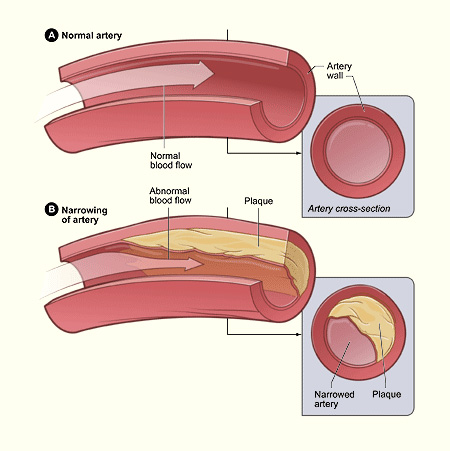CARDIOVASCULAR DISEASE
Cardiovascular disease (CVD) affects the arteries, the blood vessels that carry oxygen-rich blood to the heart and other parts of the body. The commonest and most important CVD is atherosclerosis in which plaques containing cholesterol, fibrous tissue and other cells build up in the walls of arteries. Atherosclerosis causes heart attacks when it affects the arteries of the heart and strokes when the brain arteries are affected.



